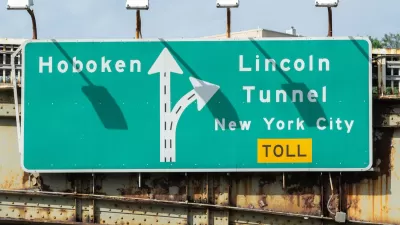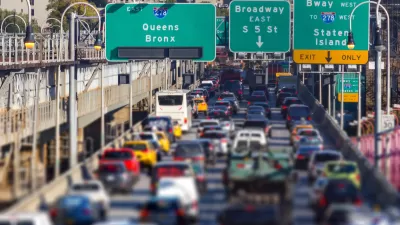Eric Jaffe reports on research that may give pause to light rail advocates who argue the mode can reduce congestion: ridership gains along new lines may come at the expense of buses, rather than cars.
"One of the main justifications for building a light rail line is the hope that it will reduce traffic congestion in a corridor, presumably by drawing commuters out of their cars and onto the train," writes Jaffe. "When we last looked at this assumption, about a year ago, we found cautious support for the decongestive value of light rail corridors in Denver. While traffic continued to rise in these corridors, it rose even more in nearby areas without the rail."
"A similar new study of British light rail systems comes away far less hopeful. In an upcoming issue of the Journal of Transport Geography, planners Shin Lee and Martyn Senior of Cardiff University found that the evidence for light rail reducing car use is unclear. Lee and Senior discovered that car ownership and car commute share often continue to rise in these corridors, and that ridership growth is often the result of travelers shifting over from buses — not cars."
After studying the travel habits of those living within four UK light rail corridors completed from 1991 to 2001, compared to four control areas, "the researchers had a hard time concluding that the light rail systems, taken together, produced much of a shift away from car commuting."
"In the end," adds Jaffe, "the researchers caution against expecting major long-term reductions in road congestion after the creation of a light rail system."
FULL STORY: Does Light Rail Really Encourage People to Stop Driving?

Planetizen Federal Action Tracker
A weekly monitor of how Trump’s orders and actions are impacting planners and planning in America.

Canada vs. Kamala: Whose Liberal Housing Platform Comes Out on Top?
As Canada votes for a new Prime Minister, what can America learn from the leading liberal candidate of its neighbor to the north?

The Five Most-Changed American Cities
A ranking of population change, home values, and jobs highlights the nation’s most dynamic and most stagnant regions.

San Diego Adopts First Mobility Master Plan
The plan provides a comprehensive framework for making San Diego’s transportation network more multimodal, accessible, and sustainable.

Housing, Supportive Service Providers Brace for Federal Cuts
Organizations that provide housing assistance are tightening their purse strings and making plans for maintaining operations if federal funding dries up.

Op-Ed: Why an Effective Passenger Rail Network Needs Government Involvement
An outdated rail network that privileges freight won’t be fixed by privatizing Amtrak.
Urban Design for Planners 1: Software Tools
This six-course series explores essential urban design concepts using open source software and equips planners with the tools they need to participate fully in the urban design process.
Planning for Universal Design
Learn the tools for implementing Universal Design in planning regulations.
New York City School Construction Authority
Village of Glen Ellyn
Central Transportation Planning Staff/Boston Region MPO
Institute for Housing and Urban Development Studies (IHS)
City of Grandview
Harvard GSD Executive Education
Regional Transportation Commission of Southern Nevada
Toledo-Lucas County Plan Commissions





























